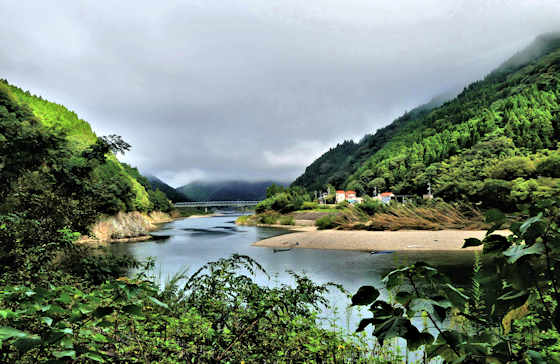Upon arriving at Tondo matsuri the first thing to do is get a drink of Kappo Zake, sake poured into a piece of bamboo that is then heated in coals and drunk from a bamboo cup. It really is delicious with a hint of bamboo flavor.
While the men are busy warming their butts by the coals, drinking sake, the ladies of the village are busy preparing food.
On the altar in front of the bonfire is a bottle of sake. In this form it is called Omiki. More on that later.
Once the fire is underway time to tuck in. First course is Nanakusa no sekku, rice porridge with the 7 herbs of spring. I asked the ladies which 7 plants were used and they said the standard ones, though I suspect there was some local variation. There usually is, though local people will believe their version is the national version. The official list is
Seri (japanese parsley)
Nazuna (shepherds purse)
Gogyo (Jersey cudweed)
Hakobera (chickweed)
Hotokenoza (henbit)
Suzuna (turnip)
Suzushiro (daikon)
Being a barbarian I found the porridge almost tasteless........ some milk and sugar would have helped.....
Main course was a huge pot of Wild Boar stew.... from the hills around the village, with masses of vegetables and
tofu. Really tasty. Ive spoken with lots of "town" Japanese who have never eaten wild boar. They tell me it smells. They also say that mutton and turkey smells.
Over the coals mochi are toasted. Big pass for me. Can't stand mochi, though there was also Zenzai, which is mochi cooked up in a sweet bean sauce. Thats OK.
Finally the Omiki, though not the usual omiki. This is Kinpakku Iri, sake with gold flakes added.
The gold flakes have no meaning, there are simply to make the sake expensive.
I like Tondo. Lots of free food and drink and everyone is in good spirits.





















